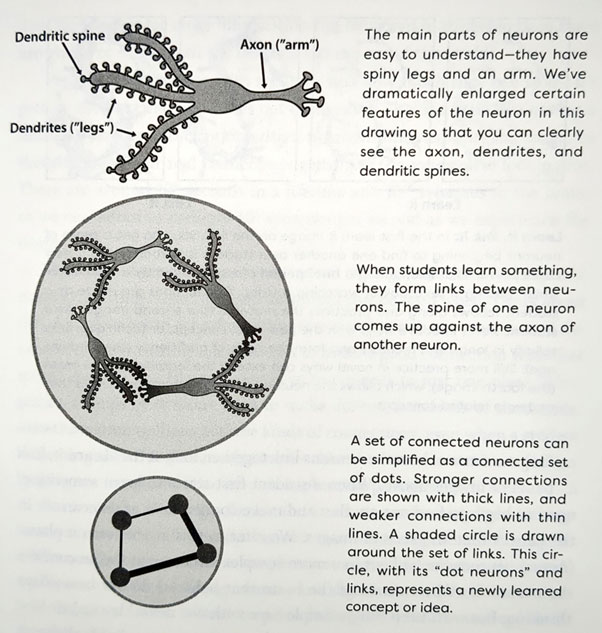Learn the latest trends business innovation with the Educational Programe

Nelson begins to tear up as he looks at his score. You already know why he’s ready to tear up – he barely passed the exam.
“I just don’t know why I lose everything when it comes time to take the test,” Nelson maintains
“I understand it fine when I’m at home or in class. It’s just that when I see the test, I freeze”
“I think I suffer from test anxiety. Or maybe it’s just that I can’t do math. My father says I’m just like him – bad at math.”
What’s going on?!? Can you help Nelson and others improve their ability to be successful learners in their seemingly weakest areas?

As students are learning, neurons are linking and strengthening – learn it, link it. To understand what’s going on, it helps to take a step back and look at the fundamental building block of our brains – the biological cell called a neuron. Each person has about 86 billion neurons. Whenever you or your students learn a new fact, concept, or procedure, you are making new connections between small sets of neurons. Neurons, if you look only at their main parts, are simple. They have legs, which are called dendrites. The legs have lots of spines on them, almost like a cactus (technically, these are called dendritic spines). And they have an arm, which is called an axon. When students are actively focusing on their learning, they are beginning the process of connecting neurons. Once a neuron involved in the learning process comes close enough to a neighbouring neuron, a signal jumps across the narrow gap (a synapse) between the two neurons – this is the foundation of learning. People sometimes think they have only limited room in their long-term memories. This isn’t true. The brain’s information storage capacity appears to be around a quadrillion bytes (A 1 followed by 15 zeroes). People’s real problem with memory isn’t how much they can store. It’s getting the information into or out of memory. The neural connections students need form in long-term memory. Nelson and other students, on the other hand, are forming in a temporary storage shelf called working memory.
View More
 Long-Term Memory (LTM) v. Working Memory (WM):
Long-Term Memory (LTM) v. Working Memory (WM):LTM holds information we’re able to store and bring back to mind from weeks, months, or even years before. If we reinforce the links of long-term learning through varied practice , our learning is generally in good shape.
WM is a temporary holding pattern for thoughts. An average WM can hold up to four ideas before ideas begin slipping from the mind.
This leads students to fool themselves into thinking surely, I have put these concepts into LTM.
This “false friend” nature of WM is why students naturally tend toward rereading and underlining. What could be more comfortable and more helpful than running your eyes past the information one more time.
But getting the information into LTM can be difficult. One of the best methods to achieve this is retrieval practice ¬– drawing ideas you are starting to learn from your own mind rather than simply looking at the answer.
The problem is that despite the very different processes involved, students often can’t tell whether they have something in WM or in LTM.
 What can teachers do?
What can teachers do?1. Explain to your students the difference between WM and LTM
2. Ask the students to pair u and explain to each other what you have just taught them about the difference between WM and LTM
3. After students finish, explain that they have just used the recall technique
Building Even Further: Practicing Jot Recall. Recall can be easily added into your teaching routine by using the Jot Recall Technique.
• Jot Notes: as you are covering essential sections in your lesson, pause and ask your students to take a fresh piece of paper or sticky note and briefly, without looking at their notes, jot down the most important ideas you have covered.
• Jot Sketches: along with their notes, have students create drawings that represent their understanding of the material being taught
• Jot Reading Materials: if you are having the students do quiet reading of materials in class, ask them to pause as they finish each page. As they pause, ask them to recall the key idea of that page without looking back at the material.
• Jot Previous Materials: ask students to jot recall materials they learned the day before, or in the previous week or month

Learning involves connecting, strengthening, and extending sets of neural links in Long-term Memory in the neocortex (Hebbian Learning).
There are many types of memory with different purposes: